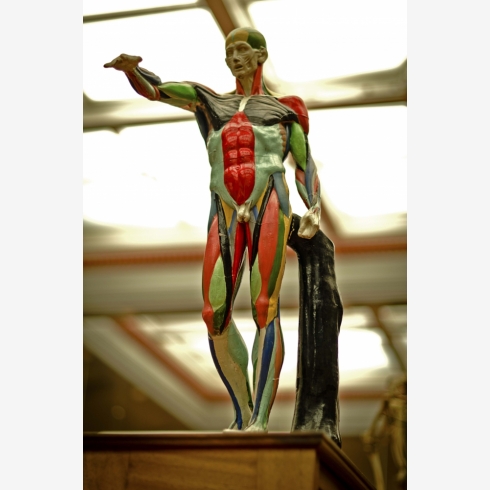Anatomy: Difference between revisions
imported>Gareth Leng No edit summary |
imported>Gareth Leng No edit summary |
||
| Line 5: | Line 5: | ||
[[Image:Muscles.jpg|left|600px| Painted glazed model showing the distribution of muscles throughout the body. From the Anatomical Museum of the [[University of Edinburgh]]. photo by Hugh Pastoll ]] | [[Image:Muscles.jpg|left|600px| Painted glazed model showing the distribution of muscles throughout the body. From the Anatomical Museum of the [[University of Edinburgh]]. photo by Hugh Pastoll]] | ||
==Etymology== | ==Etymology== | ||
Revision as of 06:36, 3 March 2012
Anatomy is the branch of morphology given to the study of the structure of members of the biological kingdom Animalia (animals). The anatomy of lower animals is often referred to as zootomy as opposed to the study of human anatomy. The term anatomy is also sometimes used to refer to the study of the structure of members of the biological kingdom Plantae (plants), which is also, but rarely, referred to as phytotomy.
Etymology
The word anatomy has been traced back to the Indo-European root tem- meaning "cut". In ancient Greek the word ἀνατομέ (anatome) meaning "dissection" arose from a sythesis of ἀνα (ana) meaning "up" or "back", and τέμνειν (temnein) to cut. The word passed through Latin as anatomia, Old French as anatomie, and on into Middle English still as anatomie.
Branches of anatomy
The major division in anatomy is that between human anatomy and zootomy. The study of anatomy can be divided up either by function, e.g. the digestive system or by structure and location, e.g. the eye and the head. Many branches of anatomy, e.g. functional anatomy, overlap with physiology. Branches of anatomy include comparative anatomy, functional anatomy, developmental anatomy, pathological anatomy, gross anatomy, microanatomy, histology, and cytology.
